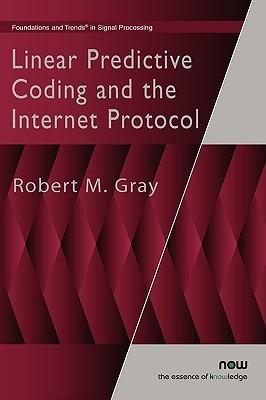
- We will send in 10–14 business days.
- Author: Robert M Gray
- Publisher: Now Publishers
- Year: 2010
- Pages: 182
- ISBN-10: 1601983484
- ISBN-13: 9781601983480
- Format: 15.6 x 23.4 x 1.1 cm, kieti viršeliai
- Language: English
- SAVE -10% with code: EXTRA
Reviews
Description
In December 1974 the first realtime conversation on the ARPAnet took place between Culler- Harrison Incorporated in Goleta, California, and MIT Lincoln Laboratory in Lexington, Massachusetts. This was the first successful application of realtime digital speech communication over a packet network and an early milestone in the explosion of realtime signal processing of speech, audio, images, and video that we all take for granted today. It could be considered as the first voice over Internet Protocol (VoIP), except that the Internet Protocol (IP) had not yet been established. In fact, the interest in realtime signal processing had an indirect, but major, impact on the development of IP. This is the story of the development of linear predictive coded (LPC) speech and how it came to be used in the first successful packet speech experiments. Several related stories are recounted as well. The history is preceded by a tutorial on linear prediction methods which incorporates a variety of views to provide context for the stories. This part is a technical survey of the fundamental ideas of linear prediction that are important for speech processing, but the development departs from traditional treatments and takes advantage of several shortcuts, simplifications, and unifications that come with years of hindsight. In particular, some of the key results are proved using short and simple techniques that are not as well known as they should be, and it also addresses some of the common assumptions made when modeling random signals. The reader interested only in the history and already familiar with or uninterested in the technical details of linear prediction and speech may skip Part I entirely.
EXTRA 10 % discount with code: EXTRA
The promotion ends in 22d.17:57:45
The discount code is valid when purchasing from 10 €. Discounts do not stack.
- Author: Robert M Gray
- Publisher: Now Publishers
- Year: 2010
- Pages: 182
- ISBN-10: 1601983484
- ISBN-13: 9781601983480
- Format: 15.6 x 23.4 x 1.1 cm, kieti viršeliai
- Language: English English
In December 1974 the first realtime conversation on the ARPAnet took place between Culler- Harrison Incorporated in Goleta, California, and MIT Lincoln Laboratory in Lexington, Massachusetts. This was the first successful application of realtime digital speech communication over a packet network and an early milestone in the explosion of realtime signal processing of speech, audio, images, and video that we all take for granted today. It could be considered as the first voice over Internet Protocol (VoIP), except that the Internet Protocol (IP) had not yet been established. In fact, the interest in realtime signal processing had an indirect, but major, impact on the development of IP. This is the story of the development of linear predictive coded (LPC) speech and how it came to be used in the first successful packet speech experiments. Several related stories are recounted as well. The history is preceded by a tutorial on linear prediction methods which incorporates a variety of views to provide context for the stories. This part is a technical survey of the fundamental ideas of linear prediction that are important for speech processing, but the development departs from traditional treatments and takes advantage of several shortcuts, simplifications, and unifications that come with years of hindsight. In particular, some of the key results are proved using short and simple techniques that are not as well known as they should be, and it also addresses some of the common assumptions made when modeling random signals. The reader interested only in the history and already familiar with or uninterested in the technical details of linear prediction and speech may skip Part I entirely.


Reviews